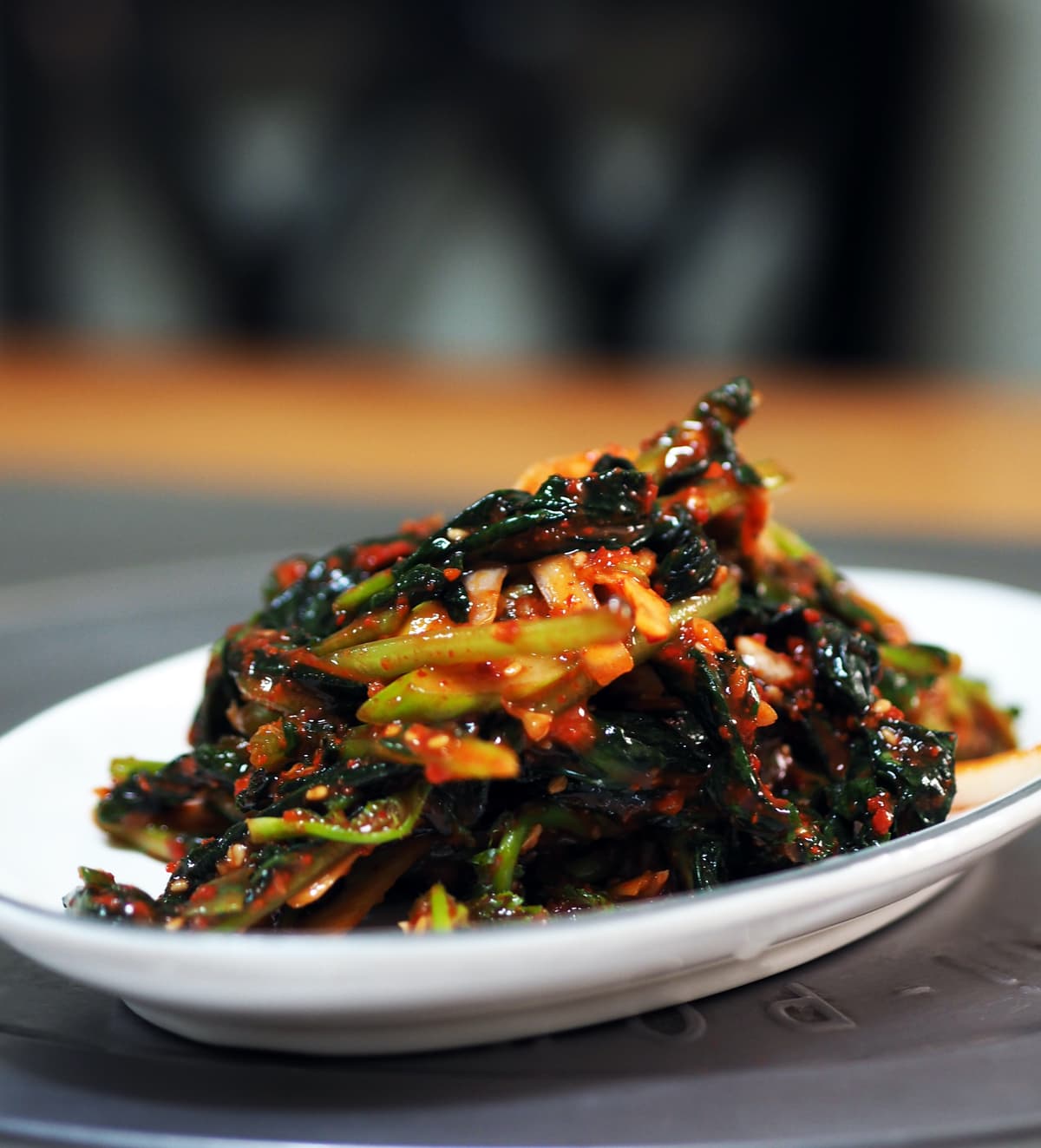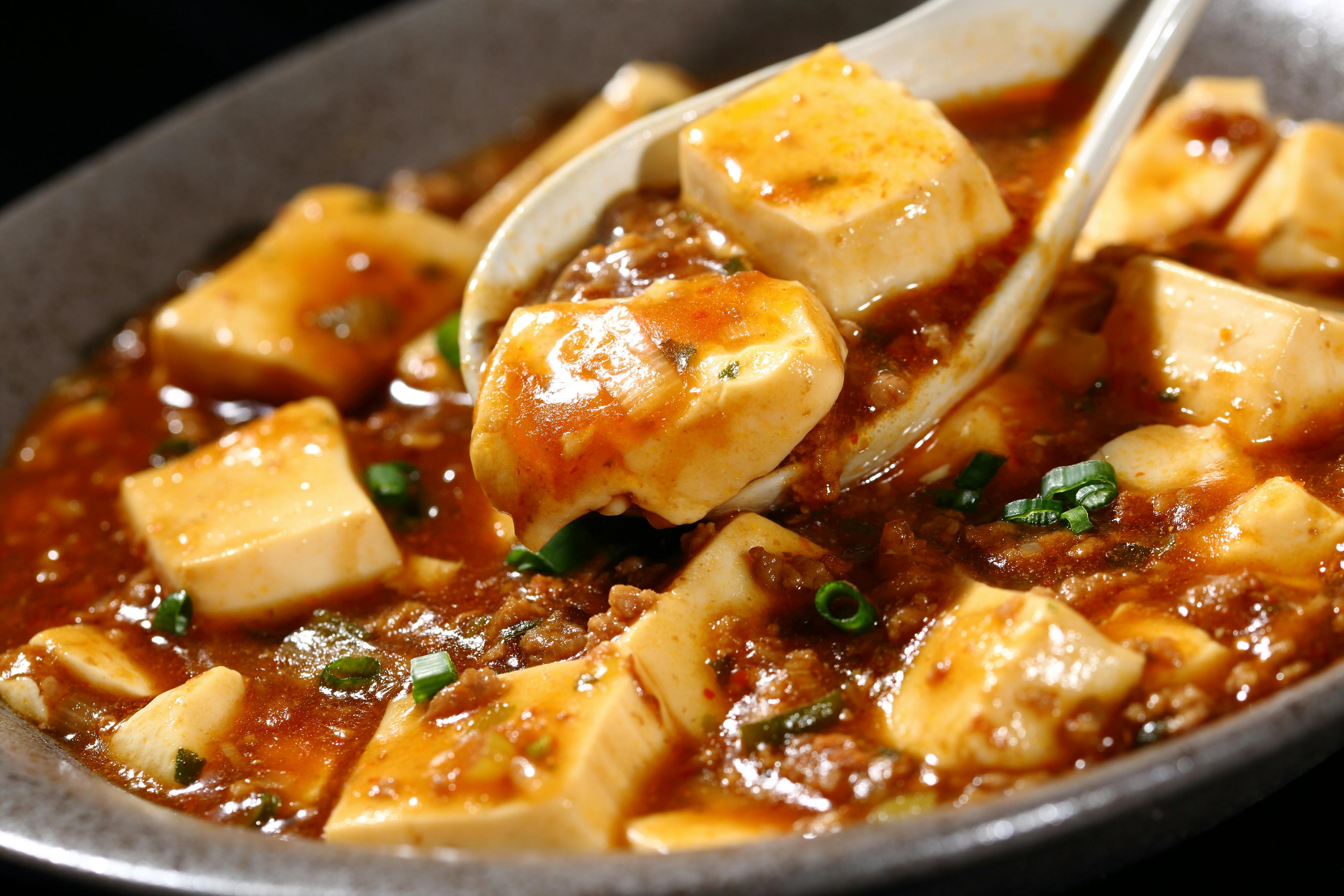
Ingredients
Get them through the links below to support the creator.
- 16 cup water
- 4 large napa cabbage
- 4 tbs sweet rice flour (glutinous rice flour)
- 2 cup kosher salt
- 1 cup Korean red pepper flakes (gochugaru)
- 24 garlic cloves
- 16 green onions
- 4 tsp ginger
- 4 tbs sugar
- 1 cup fish sauce or Korean salted shrimp paste (saeujeot)
- 4 small daikon radish
Nutritional Information
Calculated based on standard values with available measurements and may therefore not be accurate.
Nutritional information not available.
Homemade Kimchi
Instructions
Step 1
Prepare Cabbage: Cut the napa cabbage in half lengthwise, then chop it into bite-sized pieces. Dissolve 1/2 cup kosher salt in 4 cups of water in a large bowl or container. Soak the cabbage in the saltwater, making sure it's completely submerged. Let it sit for 1-2 hours, turning it occasionally.
Step 2
Rinse and Drain: After soaking, rinse the cabbage thoroughly a few times to remove excess salt. Allow it to drain in a colander for about 30 minutes.
Step 3
Make Seasoning Paste: In a small saucepan, mix sweet rice flour with 1 cup of water. Cook over medium heat, stirring constantly until it thickens into a paste (similar to porridge). Let it cool.
Step 4
Prepare Spice Mix: In a bowl, combine the cooled rice paste, Korean red pepper flakes, sugar, fish sauce or salted shrimp paste, minced garlic, grated ginger, chopped green onions, and julienned daikon radish if using. Mix thoroughly to create the kimchi seasoning paste.
Step 5
Coat Cabbage: Gently squeeze any remaining water from the cabbage. Wear gloves to protect your hands from the spice. Thoroughly coat the cabbage with the seasoning paste, making sure each piece is well covered.
Step 6
Fermentation: Pack the seasoned cabbage tightly into a clean glass jar or airtight container, pressing down firmly to remove air pockets. Leave some space at the top. Seal the container and let it ferment at room temperature for 1-5 days. Check it daily, pressing down on the kimchi with a clean utensil to keep it submerged in its juices.
Remember, the fermentation time can vary depending on the room temperature and personal taste preferences. Enjoy your homemade kimchi with rice, in stews, or as a side dish!
Step 7
Refrigerate: Once it reaches your desired level of fermentation and tanginess, move it to the refrigerator to slow down the fermentation process. Kimchi can be eaten right away but usually tastes better after a few days.
Recipe Story
A note on substitutions
Not to worry! Kimchi is quite flexible, and you can often make substitutions based on what's available to you. Here are some possible ingredient swaps:
Napa Cabbage: If napa cabbage isn't available, you can use regular green cabbage or even bok choy. They might have slightly different textures and flavors, but they work well for homemade kimchi.
Korean Red Pepper Flakes (Gochugaru): If you can't find gochugaru, you can substitute it with a combination of regular red pepper flakes and paprika to get a similar heat level and color.
Fish Sauce or Korean Salted Shrimp Paste (Saeujeot): For a vegetarian option, you can use soy sauce or tamari instead of fish sauce. For the salted shrimp paste, you can omit it entirely or use miso paste for added depth of flavor.
Sweet Rice Flour: Cornstarch or all-purpose flour can be used as alternatives to sweet rice flour, though they might not give the exact same texture.
Daikon Radish: If daikon radish isn't available, regular radishes or even carrots can be used as a substitute for that crunch and tang.
While these substitutes might slightly alter the taste and texture of the kimchi, they'll still result in a delicious homemade version. Feel free to experiment and adjust the quantities based on your taste preferences!
A bit of history
In the bustling kitchens of home cooks and street-side stalls alike, few dishes carry the soul and sizzle quite like homemade kimchi. Picture this: napa cabbage, an unsuspecting hero, marinating in a flurry of Korean red pepper flakes, ginger, and garlic, transforming into a tangy, fiery sensation that dances on your taste buds.
The process, my friends, begins with respect for the cabbage—a soak in a briny bath of kosher salt and water, an act of patience that tenderizes while maintaining its crunch. This isn't just a recipe; it's a ritual, an homage to tradition and flavor.
Now, the magic unfolds in the medley of ingredients, a symphony orchestrated by sweet rice flour, fish sauce (or its pungent counterpart, salted shrimp paste), and a chorus of minced garlic, green onions, and daikon radish for that extra crunch. But ah, the pièce de résistance—Korean red pepper flakes, an offering to the spice gods, igniting a blaze that sings the anthem of Korean cuisine.
The jar, a sanctuary for this concoction, sits proudly, fermenting, evolving over days. It's a living, breathing entity, transforming humble vegetables into a probiotic powerhouse, a culinary legacy in the making.
Homemade kimchi—vegan, gluten-free, and vibrant—is not just a side dish; it's a journey. A tribute to flavors, textures, and cultures entwined, ready to elevate your meal with each fiery, tangy, and utterly addictive bite.







